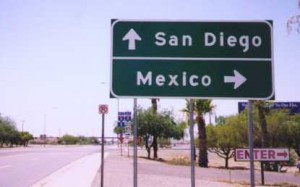By Phin Upham
Mexico declared itself officially independent from Spain in 1821, claiming Alta California and the city known as San Diego for itself. A large fort that stood on Presidio Hill was slowly abandoned as more people began settling on the flatland below.
The Mexican government secularized the mission in 1834, and the land around it was sold to wealthier citizens who planned to settle in the area. Although San Diego’s launch was less than stellar, it lost citizens throughout its first eight years, the town elected a magistrate named Juan Maria Osuna and formed a pueblo. Although that status was revoked in 1838.
San Diego’s slow growth was partially related to a lack of business there. Ranchos and agriculture were the largest drivers of employment, but the work could only sustain a certain population. When the US went to war with Mexico, one of the disputed territories was San Diego and it was easily captured because it was so desolate. San Diego would play a pivotal role in that conflict, acting as a staging area for both Mexican and American troops as the territory changed hands.
At one point, wealthy Mexicans withdrew their cattle en masse to starve the Americans. There were daily fights, and sniper fire was a regular occurrence. Things calmed down after the war, and the US was granted the territory that included San Diego during as a direct result of the Treaty of Guadalupe Hidalgo. Though the Mexican side fought hard to include San Diego in its side of the negotiations, American business interests eventually won out and the border line was drawn one league south of San Diego Bay.
About the Author: Phin Upham is an investor at a family office/ hedgefund, where he focuses on special situation illiquid investing. Before this position, Phin Upham was working at Morgan Stanley in the Media & Technology group. You may contact Phin on his Phin Upham website or Facebook page.
